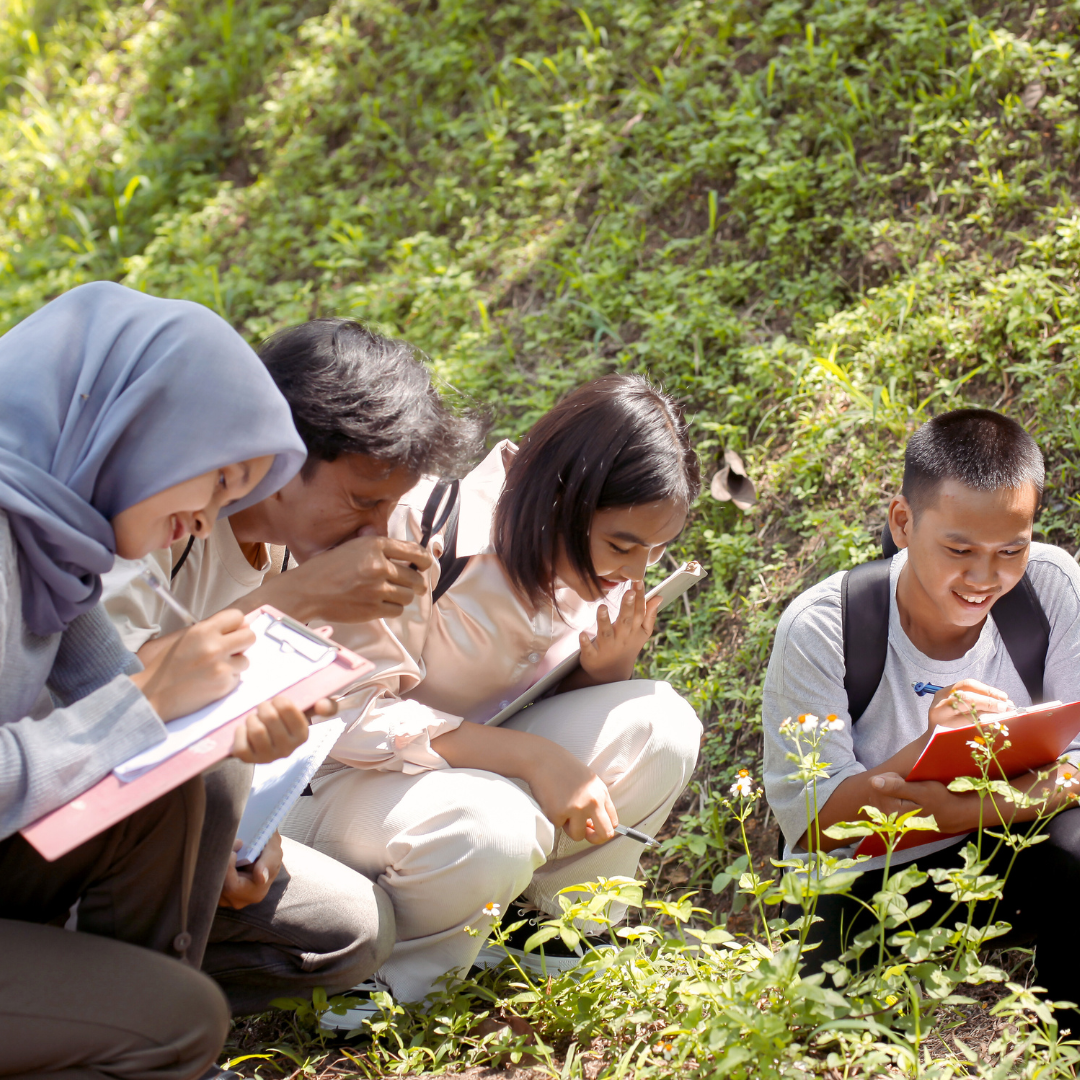Outdoor learning offers numerous advantages that significantly enhance a child’s educational experience. Engaging in outdoor activities fosters creativity, boosts motivation, and improves physical health, making learning more holistic and effective. Whether exploring nature, conducting experiments, or participating in hands-on projects, children gain essential skills that extend beyond the classroom.
Research indicates that outdoor learning environments can strengthen critical thinking and problem-solving abilities. By exploring real-world contexts, children are more likely to develop a deep understanding of various subjects, from science to social studies. Additionally, exposure to nature has been shown to reduce stress and promote overall well-being.
Parents and educators alike can appreciate the role that outdoor learning plays in fostering teamwork and social skills. Collaborative outdoor activities encourage communication and cooperation, helping children build meaningful relationships and develop a sense of community. This combination of physical activity, social interaction, and academic enrichment makes outdoor learning a powerful tool in a child’s development.
Understanding Outdoor Learning
Outdoor learning encompasses various educational practices that utilize natural settings to enhance children’s learning experiences. This approach promotes engagement through interaction with the environment, fostering not only academic growth but also personal development.
Definitions and Scope
Outdoor learning refers to educational activities that take place outside traditional classroom settings. It includes nature-based learning, which emphasizes the connection between children and their surroundings.
This method expands the educational scope by incorporating real-world experiences that enhance students’ understanding of subjects such as science, geography, and health.
Outdoor classrooms serve as vibrant venues for instruction, allowing children to explore concepts practically. This approach also encourages critical thinking and problem-solving, as students navigate real-life challenges.
Types of Outdoor Learning Activities
Several types of activities fall under outdoor learning. These include:
- Nature walks: Students engage with local ecosystems. They observe flora and fauna, fostering scientific inquiry.
- Field trips: Visits to parks, gardens, or museums allow children to learn outside the classroom.
- Gardening projects: Students grow plants, which teaches responsibility and the science of botany.
- Adventure education: Activities such as hiking or climbing promote teamwork and resilience.
Incorporating diverse activities ensures a well-rounded educational experience that addresses various learning styles. Each activity reinforces core curriculum concepts while also building social and emotional skills.
Developmental Benefits for Children
Engaging children in outdoor learning presents numerous developmental benefits. These advantages span physical growth, emotional resilience, and cognitive skill enhancement, providing a holistic approach to child development.
Physical and Motor Skills Enhancement
Outdoor learning significantly contributes to physical development. Activities such as running, climbing, and playing sports improve motor skills and enhance overall physical fitness.
- Physical Activity: Increased outdoor play boosts cardiovascular health and builds muscle strength.
- Fine and Gross Motor Skills: Balancing on logs or catching a ball aids in coordination and reaction times.
- Confidence: Mastering physical challenges enhances self-confidence, encouraging children to pursue new activities.
Regular physical engagement also promotes healthy lifestyle habits, critical for long-term well-being.
Emotional and Social Development
Children engaged in an outdoor learning experience experience vital emotional growth. The natural environment fosters emotional resilience, helping them navigate challenges.
- Social Skills: Team activities promote communication skills and cooperative play.
- Creativity: Open spaces encourage imaginative play, allowing children to develop innovative thinking.
- Problem-Solving: Facing real-world challenges outdoors enhances critical thinking and decision-making.
These experiences not only help form friendships but also contribute to a strong sense of community. Such skills are essential for future interpersonal relationships.
Cognitive and Academic Advancement
Outdoor learning also supports cognitive development, linking nature to enhanced academic performance. Exposure to diverse environments stimulates curiosity and engagement.
- Concentration: Nature reduces distractions, improving focus and learning retention.
- Motivation: Active learning outdoors can increase children’s enthusiasm for education.
- Engaged Learning: Real-world applications reinforce classroom concepts, closing the gap between theory and practice.
Children who learn outdoors often exhibit improved concentration and problem-solving abilities, leading to higher academic achievement. The connection to nature encourages lifelong learning habits, essential for future success.
Interpersonal and Intrapersonal Growth
Outdoor learning provides children with a rich environment for developing vital interpersonal and intrapersonal skills. Through various activities, they build essential relationships and self-awareness.
Building Teamwork and Leadership
Engaging in group activities outdoors fosters teamwork. Children learn to collaborate on projects such as building shelters or navigating trails together. These experiences cultivate leadership skills, as some children naturally emerge as leaders, guiding their peers.
Key benefits include:
- Sharing responsibilities
- Establishing trust within the group
- Valuing diverse perspectives
By working together, children develop empathy and respect for one another. They learn to resolve conflicts that arise during group interactions, enhancing their ability to navigate social dynamics.
Cultivating Independence and Self-awareness
Outdoor learning encourages children to explore independently. Activities like hiking or nature journaling promote self-direction and personal responsibility. This autonomy instills confidence, allowing them to make choices and learn from their experiences.
As children engage in self-reflection, they develop greater self-awareness. They begin to understand their strengths, weaknesses, and preferences. This process of self-discovery supports the growth of a sound self-image.
Benefits include:
- Enhanced decision-making skills
- Increased resilience
- Greater adaptability to change
Such independence is crucial for fostering personal growth and establishing healthy relationships.
Enhancing Communication and Cooperation
Effective communication is vital in outdoor settings. Children must articulate ideas, express feelings, and provide feedback to one another. These skills lead to improved cooperation, as they learn to listen actively and engage in meaningful discussions.
Outdoor activities often require children to negotiate and collaborate towards common goals. This fosters a sense of community and connectedness.
Key aspects include:
- Developing conflict resolution skills
- Building lasting friendships
- Learning the importance of empathy
Through these interactions, children understand the value of cooperation and the impact of their words and actions on others.
Integrating Outdoor Learning with Traditional Education
Incorporating outdoor learning into traditional education enhances student engagement and fosters essential skills such as curiosity and critical thinking. This integration requires collaboration among educators, an emphasis on environmental stewardship, and a review of practical implementations.
Role of Educators and Classroom Dynamics
Educators play a crucial role in blending outdoor learning with traditional methods. They can facilitate activities outside the classroom, encouraging exploration and hands-on learning. By inviting students into the natural environment, educators foster curiosity and promote critical thinking.
Classroom dynamics shift when outdoor learning is prioritized. Students often exhibit increased motivation and participation, which can enhance emotional intelligence. This dynamic shift may involve new classroom arrangements, where discussions begin outside, leading back into the classroom for further exploration of ideas.
Environmental Stewardship and Sustainability
Integrating outdoor learning promotes environmental stewardship and sustainability. By engaging students with nature, they develop a deeper appreciation for the environment. Activities such as planting trees, maintaining gardens, and involving students in local conservation efforts build awareness.
These experiences also encourage students to adopt sustainable practices. Understanding ecosystems and wildlife contributes to responsible behavior toward the environment. This connection enhances students’ sense of responsibility for the world around them.
Case Studies and Success Stories
Numerous schools have successfully integrated outdoor learning with traditional curricula. For example, a primary school in Oregon has implemented outdoor science classes that include hands-on experiments in local habitats. This approach has yielded improved test scores and increased student interest in science.
Another case study from a school in California illustrates the importance of play equipment in outdoor settings. They installed natural play structures that promote problem-solving and critical thinking. As a result, students show a greater affinity for teamwork and collaborative learning, showcasing how outdoor spaces can enhance social skills alongside academic performance.



